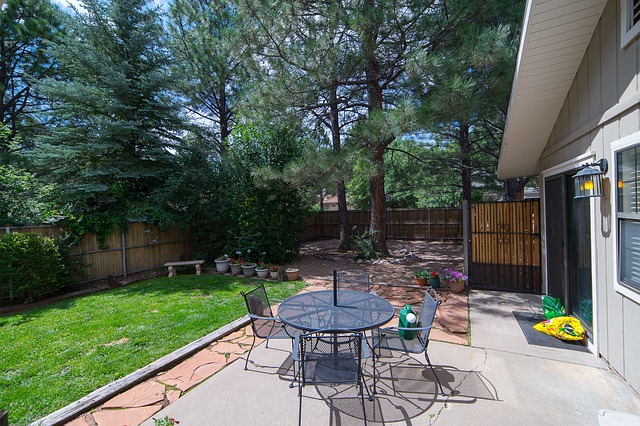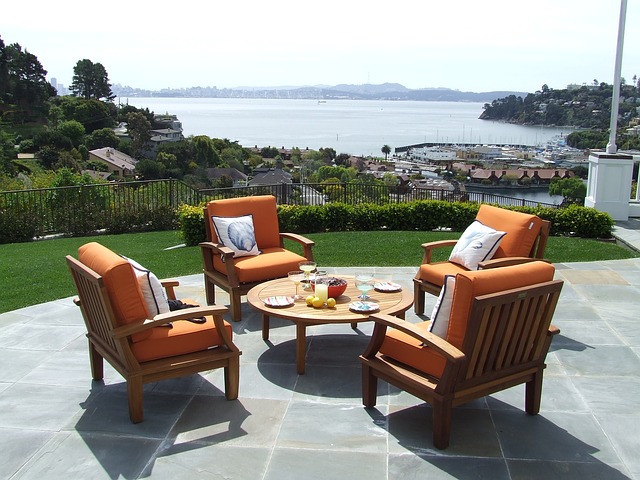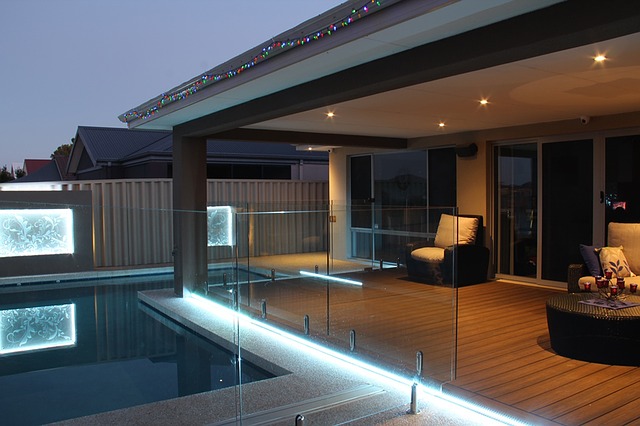
If you’re looking to sit out in your garden this summer, then a patio will provide the perfect means of doing so. That’s why they’re to be found at the rear of houses throughout the land. A patio, given the right decorations and garden furniture, can provide an extra living area – effectively extending your home.
In order to do this job, a patio should ideally be paired with a set of patio doors, which will bridge the gap between the home and the garden. Such doors come in a plethora of shapes, sizes and styles – and the choice is likely to make a large difference to how the patio ends up looking.
When making the decision, you’ll need to consider a range of different factors. In this article, let’s examine some of the most considerable of them.
Patio doors, for the most part, come in three different categories.
Bi-folding patio doors contain several different panels, each adjoined to its neighbour by a hinge so that the entire thing can fold back on itself in a concertina arrangement. They’re often used in places where space is at a premium – like store cupboard doors. In recent years, however, they’ve grown in size to the point that they can be used as patio doors. You’ll find folding doors in a variety of arrangements – some consisting of multiple panels which meet in the centre. Each is tethered to a single range of motion by tracks at the top and bottom of the door. Check out our bifold door FAQs for more information.
French doors are a more traditional sort, popular since plate glass became widespread, centuries ago. They were first introduced in order to allow natural light to flow into the stately homes of French aristocrats, and this is a function they still serve today. They’re perfect for more traditional, older homes, where simplicity is called for.
Sliding doors consist of two or more panels, which slide behind one another in order to provide access to the outside world. A sliding door is distinct from the other two in that it doesn’t expand as it’s opened, which means that we’re able to place furniture close to the door and that we can hang curtains and blinds over the top of them with ease.
Find out more about the different door types in our article on what style of patio door to choose.

When choosing between these three styles, it’s important to ask yourself how often you’ll be heading out into the garden – especially during winter. At the height of summer, it might be beneficial to be able to open out an entire wall of your home, creating a ten-feet-wide opening through which you can easily wander on your way between the fridge and the barbeque. During winter, however, opening your patio door to this extent will rapidly drain all of the warm air from the house, leaving you shivering – and sending your energy expenditure through the roof.
If you’re using your patio door during winter, then it might be best to opt for a relatively small set of doors. This is where French doors are at an advantage; since they consist of just a pair of doors, they can be easily opened and shut without draining too much heat from the interior. The same is true of sliding doors – which can be opened just a few feet and quickly shut, minimising heat loss.
Folding doors are, in this respect, at a disadvantage. But there are some designs which compensate for this, comprising a large set of connected panels on one side, and a single connecting panel on the other. During winter, you’ll be able to enter and exit the building through the single panel, leaving the rest of the door as it is. Folding doors arranged in this way tend to be advertised as 5+1, or 4+1, with the former figure describing the number of panels on the other side of the door.
If you’re just using your door during the summer, however, then you might prefer to indulge in something that’s as expansive as possible. A large sliding or folding door will allow you to open out the largest possible space, allowing for easy access to the interior and really helping to break down the barrier between the home and garden – which, after all, is the primary function of a patio door.
Naturally, since each of the doors we’ve mentioned has their own strengths and weaknesses, it follows that you’ll need to compromise a little, whichever decision you ultimately make. It’s worth therefore starting by asking yourself: what are you looking for most in your new patio doors?

A great set of patio doors will offer an unrestricted view of the world outside, providing not only a door but an extra window. This is where the larger sorts of patio doors really shine, as a larger surface area means more glass, and more glass means greater visibility. This is where wood and metal doors really come into their own, as they’re stronger, and can, therefore, get away with narrower frames. Folding and sliding doors tend to offer better visibility than French ones, by simple virtue of the fact that they’re larger – but a set of French doors equipped with large glass panels will still go a way towards opening your home out to the world outside.
Patio doors have something of a reputation for attracting burglars – but this reputation is somewhat undeserved. To be sure, if a burglar can see into your property, they’ll be more inclined to try to break in and take what’s on offer, but provided the glass can’t be easily removed, they may struggle to do so. Contrary to what film and television might have taught us, burglars are extremely reluctant to smash glass in order to gain entry, as this will create a loud noise, risk injury and leave an enormous amount of evidence at the scene of the crime.
When it comes to security, it’s outward opening French doors which tend to fare the worst – as they sometimes come with exposed hinges that can be easily tampered with. Be sure, if you’re investing in such a door, that the bolts are secured and tamper-proof.
Of course, we can lower the security risk associated with a patio door by covering them up with curtains or blinds when we’re not in the room. This will prevent would-be intruders from seeing into the property and assessing whether they’d like to target it. For more tips and advice, read our article on making patio doors more secure.
If you’d like to avoid having to carry out occasional repairs on your doors, then plastics and metal might seem the way to go. uPVC is designed to never be polished or sanded, but it might benefit from an occasional wipe. The same is true of aluminium, which, once powder-coated, will be able to stand up to even the most punishing weather conditions without much complaint.
Wooden doors, by contrast, will require occasional maintenance in the form of washing, sanding and finishing if they’re to look and function their best. This work needn’t be gruelling and frequent, however, and it can really make the difference to your patio – particularly if you’ve got a raised wooden patio which might benefit from the same treatment.

Of course, you’ll want to be sure that your patio doors make a good fit for the rest of your property. The more glaring mismatches will be obvious: aluminium patio doors are unlikely to make a good fit for an otherwise period property, while a timber French design probably won’t work in an apartment that’s filled with chrome and other hyper-modern materials.
Ideally, you’ll want both your garden and your interior to be as consistent as possible – since, after all, our final objective should be that the former adjoins seamlessly with the latter. This means that we’ll need to think not just about the sort of doors we’ll be buying, but about the theme we’re aiming for as a whole. Once this has been established, it’ll help to inform all of your purchasing decisions in both the home and garden.
In Conclusion
A patio is, increasingly, an important living space in the British home. It’s somewhere where we can unwind during summer (and, with the help of a patio heater, winter). A patio door can help to bridge the gap between our home and property – but investing in one can be a considerable expense. It’s therefore worth considering just how you’ll be using yours before dipping into your wallet.
By the same token, however, it’s worth listening to your gut, too. If you’ve really got your heart set on a particular style of door, then you’re unlikely to regret the decision; remember, you can always tweak the rest of your décor to match the door after it’s installed.
Proud stockists of....
